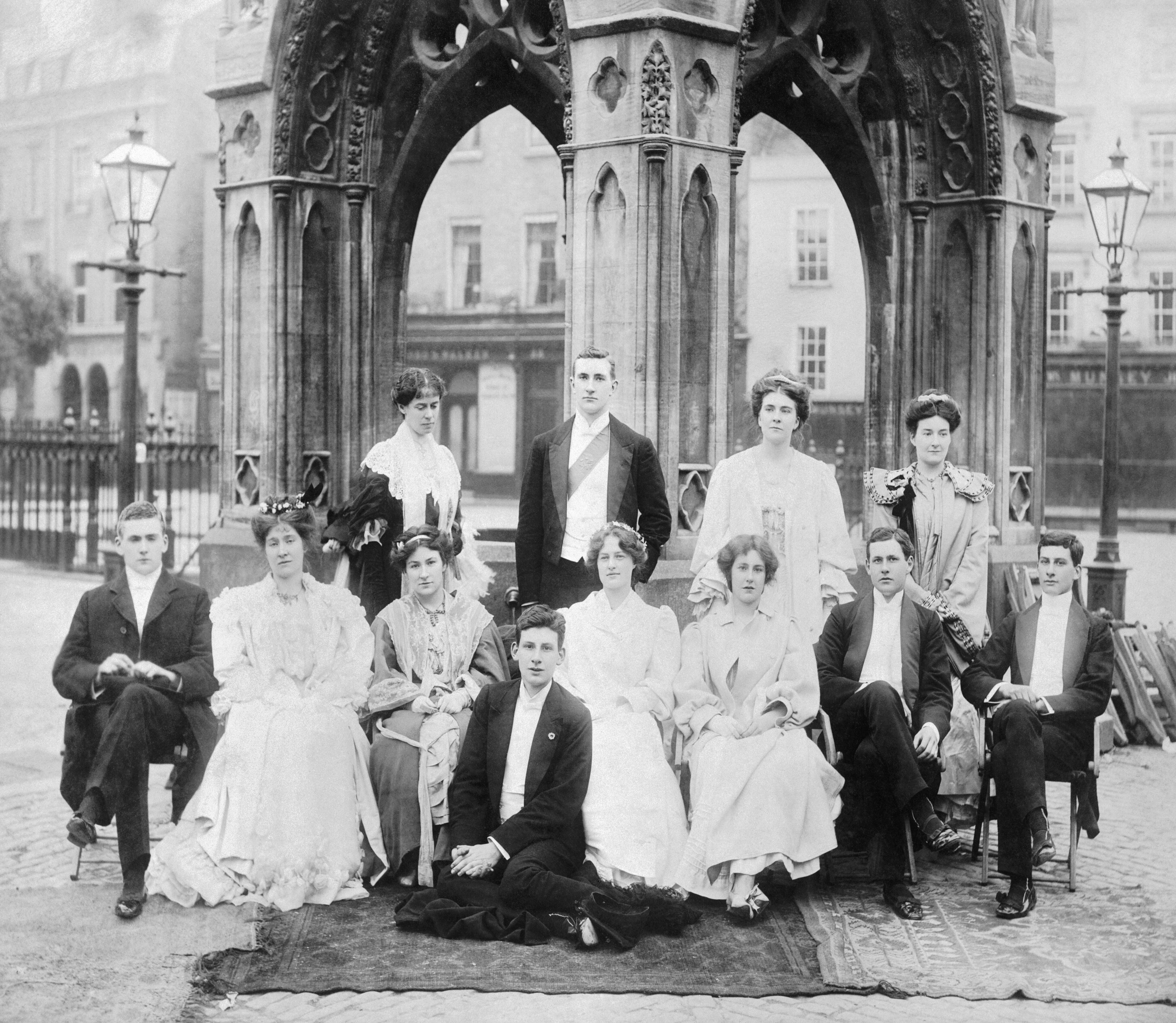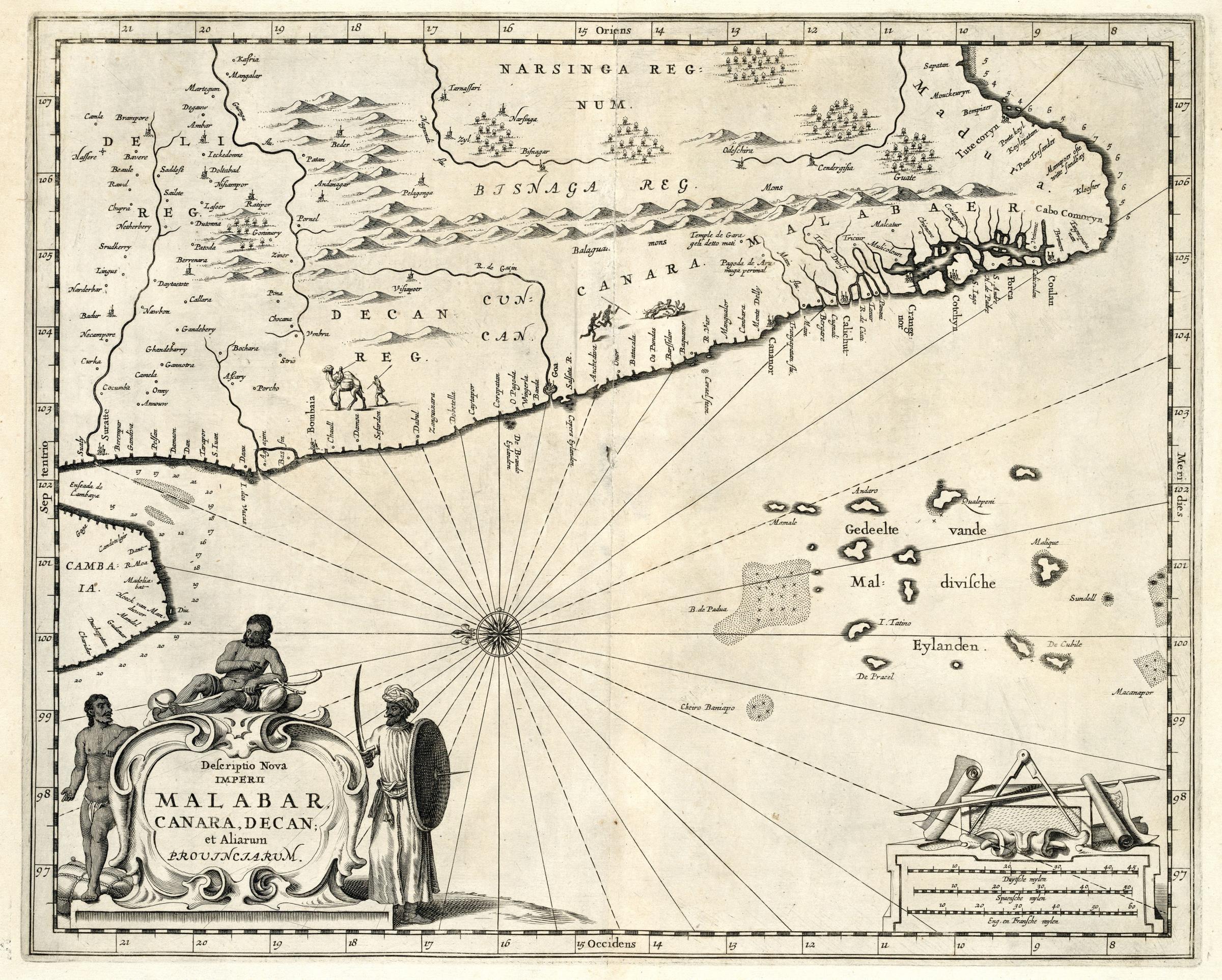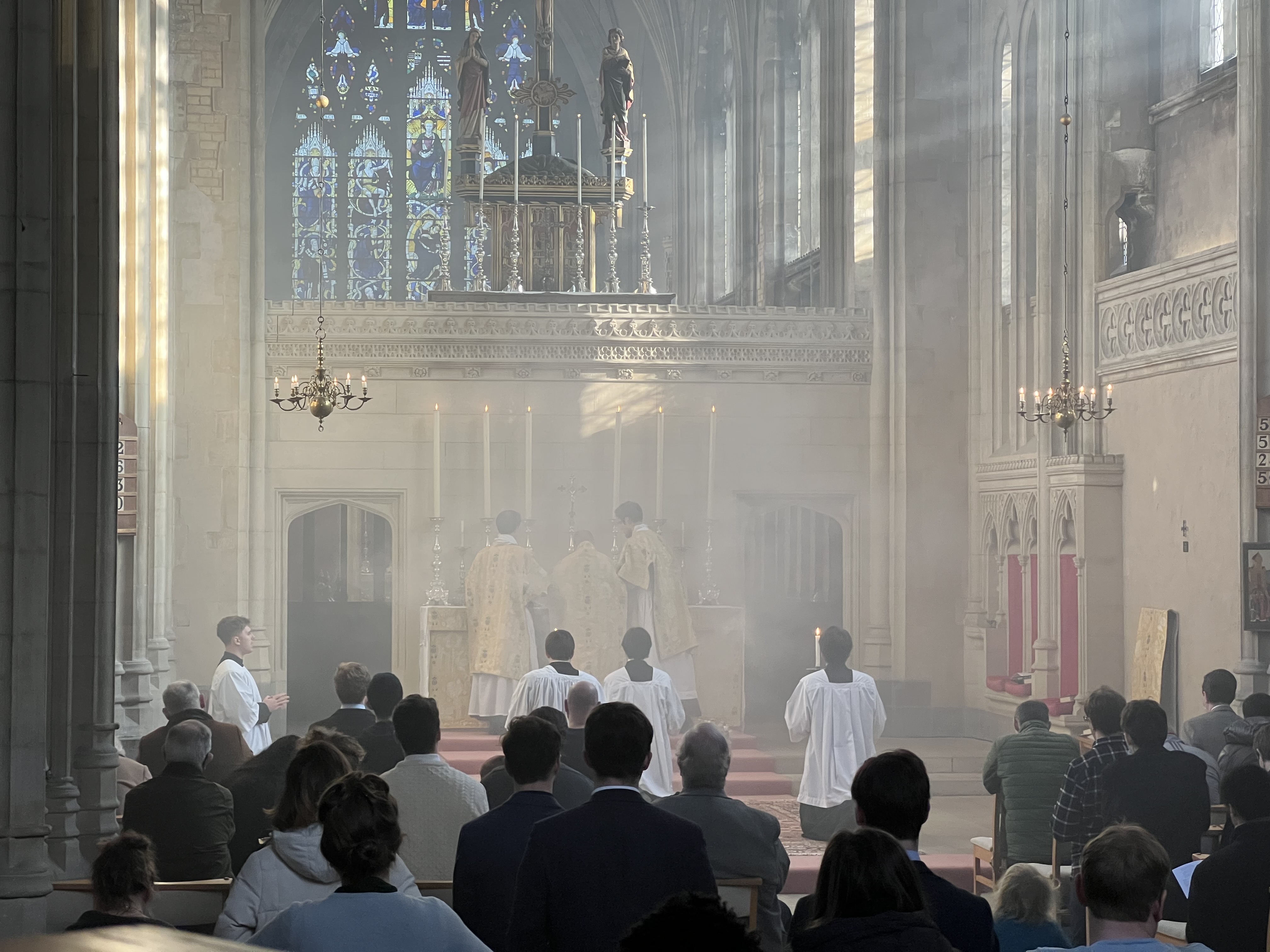|
Siegfried Sassoon
Siegfried Loraine Sassoon (8 September 1886 – 1 September 1967) was an English war poet, writer, and soldier. Decorated for bravery on the Western Front (World War I), Western Front, he became one of the leading poets of the First World War. His poetry both described the horrors of the trenches and satirized the patriotic pretensions of those who, in Sassoon's view, were responsible for a jingoism-fuelled war. Sassoon became a focal point for dissent within the armed forces when he made a lone protest against the continuation of the war with his "Soldier's Declaration" of July 1917, which resulted in his being sent to the Craiglockhart War Hospital. During this period, Sassoon met and formed a friendship with Wilfred Owen, who was greatly influenced by him. Sassoon later won acclaim for his prose work, notably his three-volume, fictionalised autobiography, collectively known as the Sherston trilogy. Early life Siegfried Sassoon was born to a Jewish father and an Anglo-Ca ... [...More Info...] [...Related Items...] OR: [Wikipedia] [Google] [Baidu] |
George Charles Beresford
George Charles Beresford (10 July 1864 – 21 February 1938) was a British studio photographer, originally from Drumlease, Dromahair, County Leitrim. Early life A member of the Beresford family headed by the Marquess of Waterford and the third of five children, he was the son of Major Henry Marcus Beresford and Julia Ellen Maunsell. His paternal grandfather was the Most Reverend Marcus Beresford (clergyman), Marcus Beresford, Archbishop of Armagh, youngest son of the Right Reverend George Beresford (clergyman), George Beresford, Bishop of Kilmore, second son of John Beresford (statesman), John Beresford, second son of Marcus Beresford, 1st Earl of Tyrone. Beresford was sent to Westward Ho! in 1877 and attended the United Services College. Rudyard Kipling's character M'Turk in his collection of school stories set at the College, Stalky & Co., was based on Beresford, whose autobiography ''Schooldays with Kipling'' appeared in 1936. On leaving in 1882 he enrolled at the Royal In ... [...More Info...] [...Related Items...] OR: [Wikipedia] [Google] [Baidu] |
Jingoism
Jingoism is nationalism in the form of aggressive and proactive foreign policy, such as a country's advocacy for the use of threats or actual force, as opposed to peaceful relations, in efforts to safeguard what it perceives as its national interests. Colloquially, jingoism is excessive bias in judging one's own country as superior to others – an extreme type of nationalism (''cf''. chauvinism and ultranationalism). Etymology The chorus of a song by the songwriter G. W. Hunt, popularized by the singer G. H. MacDermott – which was commonly sung in British pubs and music halls around the time of the Russo-Turkish War of 1877–78 – gave birth to the term. The lyrics included this chorus: The capture of Constantinople was a long-standing Russian strategic aim, since it would have given the Russian Navy, based in the Black Sea, unfettered access to the Mediterranean Sea through the Bosphorus and the Dardanelles (known as the " Turkish Straits"); conver ... [...More Info...] [...Related Items...] OR: [Wikipedia] [Google] [Baidu] |
Tuberculosis
Tuberculosis (TB), also known colloquially as the "white death", or historically as consumption, is a contagious disease usually caused by ''Mycobacterium tuberculosis'' (MTB) bacteria. Tuberculosis generally affects the lungs, but it can also affect other parts of the body. Most infections show no symptoms, in which case it is known as inactive or latent tuberculosis. A small proportion of latent infections progress to active disease that, if left untreated, can be fatal. Typical symptoms of active TB are chronic cough with hemoptysis, blood-containing sputum, mucus, fever, night sweats, and weight loss. Infection of other organs can cause a wide range of symptoms. Tuberculosis is Human-to-human transmission, spread from one person to the next Airborne disease, through the air when people who have active TB in their lungs cough, spit, speak, or sneeze. People with latent TB do not spread the disease. A latent infection is more likely to become active in those with weakened I ... [...More Info...] [...Related Items...] OR: [Wikipedia] [Google] [Baidu] |
Richard Wagner
Wilhelm Richard Wagner ( ; ; 22 May 181313 February 1883) was a German composer, theatre director, essayist, and conductor who is chiefly known for his operas (or, as some of his mature works were later known, "music dramas"). Unlike most opera composers, Wagner wrote both the libretto and the music for each of his stage works. Initially establishing his reputation as a composer of works in the romantic vein of Carl Maria von Weber and Giacomo Meyerbeer, Wagner revolutionised opera through his concept of the ''Gesamtkunstwerk'' ("total work of art"), whereby he sought to synthesise the poetic, visual, musical and dramatic arts, with music subsidiary to drama. The drama was to be presented as a continuously sung narrative, without conventional operatic structures like Aria, arias and Recitative, recitatives. He described this vision in a List of prose works by Richard Wagner, series of essays published between 1849 and 1852. Wagner realised these ideas most fully in the first ... [...More Info...] [...Related Items...] OR: [Wikipedia] [Google] [Baidu] |
Hamo Thornycroft
Sir William Hamo Thornycroft (9 March 185018 December 1925) was an English sculptor, responsible for some of London's best-known statues, including the controversial statue of Oliver Cromwell outside the Palace of Westminster. He was a keen student of classical sculpture and was one of the youngest artists to be elected to the Royal Academy, in 1882, the same year the bronze cast of ''Teucer'' was purchased for the British nation under the auspices of the Chantrey Bequest. He was a leading figure in the establishment of the New Sculpture movement, which provided a transition between the neoclassical styles of the 19th century and later modernist developments. Biography Early life and education William Hamo Thornycroft was born in London into the Thornycroft family of sculptors. Both his parents, Thomas and Mary, and his grandfather, John, were distinguished sculptors. As a young child, Hamo was sent to live with an uncle on a farm in Cheshire until, aged nine, he began stu ... [...More Info...] [...Related Items...] OR: [Wikipedia] [Google] [Baidu] |
Thornycroft Family
The Thornycroft family was a notable English family of sculptors, artists and engineers, connected by marriage to the historic Sassoon family. The earliest known mention of the family is stated in George Ormerod's ''History of Cheshire'' as during the reign of Henry III in the 13th century, taking its name from a Cheshire Cheshire ( ) is a Ceremonial counties of England, ceremonial county in North West England. It is bordered by Merseyside to the north-west, Greater Manchester to the north-east, Derbyshire to the east, Staffordshire to the south-east, and Shrop ... hamlet. Sir John Isaac Thornycroft (1843–1928) was the founder of the Thornycroft shipbuilding company. References External links * Photographs of All Saints, Siddington, Cheshire, England, UK- has early history of the family tree and 18th-century family tree Sassoon family {{England-bio-stub ... [...More Info...] [...Related Items...] OR: [Wikipedia] [Google] [Baidu] |
Theresa Thornycroft
Theresa Thornycroft (1853 – July 1947) was an English sculptor and painter. Biography Born Theresa Georgina Thornycroft, she was a member of the inventive and artistic branch of the Thornycroft family. Her father was the sculptor and engineer Thomas Thornycroft (1815–1885), and her mother, the sculptor Mary Francis (1814–1895), worked under both her maiden name and her married name. Theresa's brother Sir Hamo Thornycroft was also a sculptor, her sisters Alyce Thornycroft and Helen Thornycroft were artists, and her brother Sir John Isaac Thornycroft was the founder of the Thornycroft shipbuilding company. Her niece was the naval architect Blanche Thornycroft. A gifted artist, she exhibited her paintings at the Royal Academy of Arts in London before she turned twenty-two. She married Alfred Ezra Sassoon (1861–1895) of the Jewish Sassoon family. Because she was Anglo-Catholic, he was disinherited by the Sassoon family for marrying her. They had thre ... [...More Info...] [...Related Items...] OR: [Wikipedia] [Google] [Baidu] |
Baghdadi Jews
Baghdadi Jews (; ) or Iraqi Jews are historic terms for the former communities of Jewish migrants and their descendants from Baghdad and elsewhere in the Middle East. They settled primarily in the ports and along the trade routes around the Indian Ocean and the South China Sea. Beginning under the Mughal Empire in the 18th century, merchant traders from Baghdad and Aleppo established Judeo-Arabic speaking Jewish communities in India, then in a trading network across Asia, following Jewish customs. These flourished under the British Empire in the 19th century, growing to be English language, English-speaking and British oriented. These grew into a tight trading and kinship network across Asia with smaller Baghdadi communities being established beyond India in the mid-nineteenth century in Burma, Singapore, Hong Kong and Shanghai. Baghdadi trading outposts were established further across Asia, and into Southeast Asia and Oceania, with families settling in Japan, Malaysia, Indone ... [...More Info...] [...Related Items...] OR: [Wikipedia] [Google] [Baidu] |
Sassoon David Sassoon
Sassoon David Sassoon (August 1832 – 24 June 1867) was a British Indian Iraqi businessman, banker, and philanthropist. Sassoon was the first member of the Sassoon family to expand the family's business interests into England. Biography Early life Sassoon was born in August 1832 in Bombay, India.William D. Rubinstein, ''The Palgrave Dictionary of Anglo-Jewish History'', Palgrave Macmillan, 2011, p. 86/ref> He was a member of the Sassoon family. His father was David Sassoon (treasurer), David Sassoon (1792–1864), a leading trader of cotton and opium who served as the treasurer of Baghdad between 1817 and 1829, and his mother was Farha Hayim of Baghdad. He suffered from poor health from infancy but travelled widely. He was educated in biblical and Talmudic lore in Baghdad. He also spoke several Oriental languages with great fluency. Business career He proceeded to Shanghai, where he conducted the mercantile operations of the Chinese branch of the firm of David Sassoon ... [...More Info...] [...Related Items...] OR: [Wikipedia] [Google] [Baidu] |
Harrison Weir
Harrison William Weir (5 May 18243 January 1906), known as "The Father of the animal fancy, Cat Fancy", was a British artist. He organised the first cat show in England, at the The Crystal Palace, Crystal Palace, London, in July 1871. He and his brother, John Jenner Weir, both served as judges in the show. In 1887 Harrison Weir founded the National Cat Club and was its first President and Show Manager until his resignation in 1890. History Weir was born at Lewes, Sussex, on 5 May 1824. In 1866 Weir started working on his Victorian gothic home "Weirleigh", in the village of Matfield, Kent. Weirleigh was later bought by the Sassoon family and was the birthplace of Siegfried Sassoon in 1886. The house still stands today. After selling Weirleigh, Weir lived at Poplar Hall, Appledore, Kent, where he died on 3 January 1906. Career Weir was educated at Albany Academy, Camberwell, until 1837 when he became apprenticed to George Baxter (printer), George Baxter, the colour-printer. ... [...More Info...] [...Related Items...] OR: [Wikipedia] [Google] [Baidu] |
Anglo-Catholic
Anglo-Catholicism comprises beliefs and practices that emphasise the Catholicism, Catholic heritage (especially pre-English Reformation, Reformation roots) and identity of the Church of England and various churches within Anglicanism. Anglo-Catholicism claims to restore Christian liturgy, liturgical and Anglo-Catholic devotions, devotional expressions of church life that reflect the ancient practices of the early and medieval church. The term was coined in the early 19th century, although movements emphasising the Catholic nature of Anglicanism already existed. Particularly influential in the history of Anglo-Catholicism were the Caroline Divines of the 17th century, the Jacobitism, Jacobite Nonjuring schism of the 17th and 18th centuries, and the Oxford Movement, which began at the University of Oxford in 1833 and ushered in a period of Anglican history known as the "Catholic Revival". History The historic Anglican formularies, developed under the influence of Thomas Cranme ... [...More Info...] [...Related Items...] OR: [Wikipedia] [Google] [Baidu] |
First World War 1914 - 1918- War Poets HU50506
First most commonly refers to: * First, the ordinal form of the number 1 First or 1st may also refer to: Acronyms * Faint Images of the Radio Sky at Twenty-Centimeters, an astronomical survey carried out by the Very Large Array * Far Infrared and Sub-millimetre Telescope, of the Herschel Space Observatory * For Inspiration and Recognition of Science and Technology, an international youth organization * Forum of Incident Response and Security Teams, a global forum Arts and entertainment Albums * ''1st'' (album), by Streets, 1983 * ''1ST'' (SixTones album), 2021 * ''First'' (David Gates album), 1973 * ''First'', by Denise Ho, 2001 * ''First'' (O'Bryan album), 2007 * ''First'' (Raymond Lam album), 2011 Extended plays * ''1st'', by The Rasmus, 1995 * ''First'' (Baroness EP), 2004 * ''First'' (Ferlyn G EP), 2015 Songs * "First" (Lindsay Lohan song), 2005 * "First" (Cold War Kids song), 2014 * "First", by Lauren Daigle from the album '' How Can It Be'', 2015 * "First", ... [...More Info...] [...Related Items...] OR: [Wikipedia] [Google] [Baidu] |







